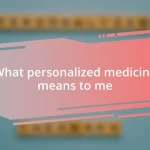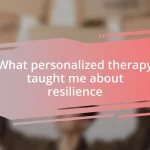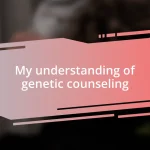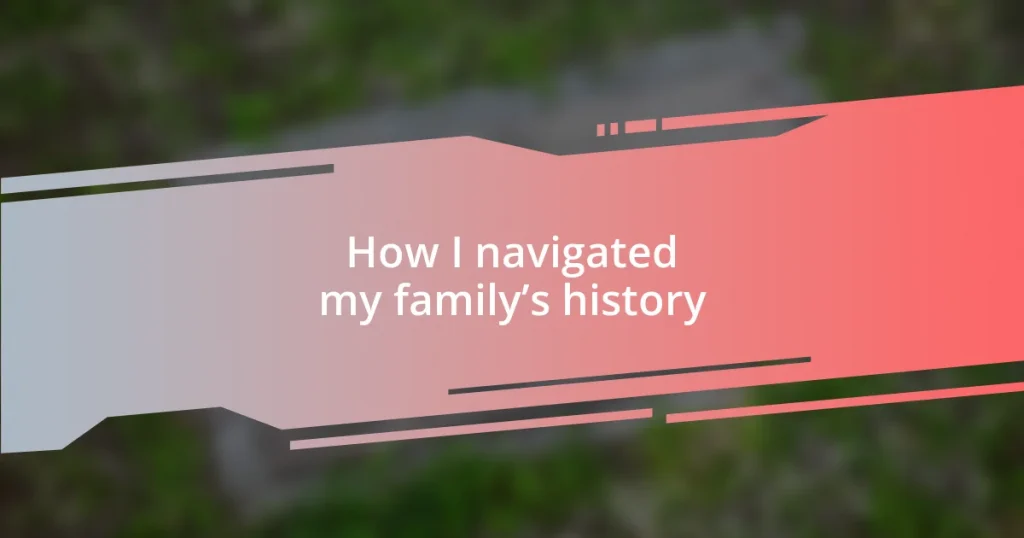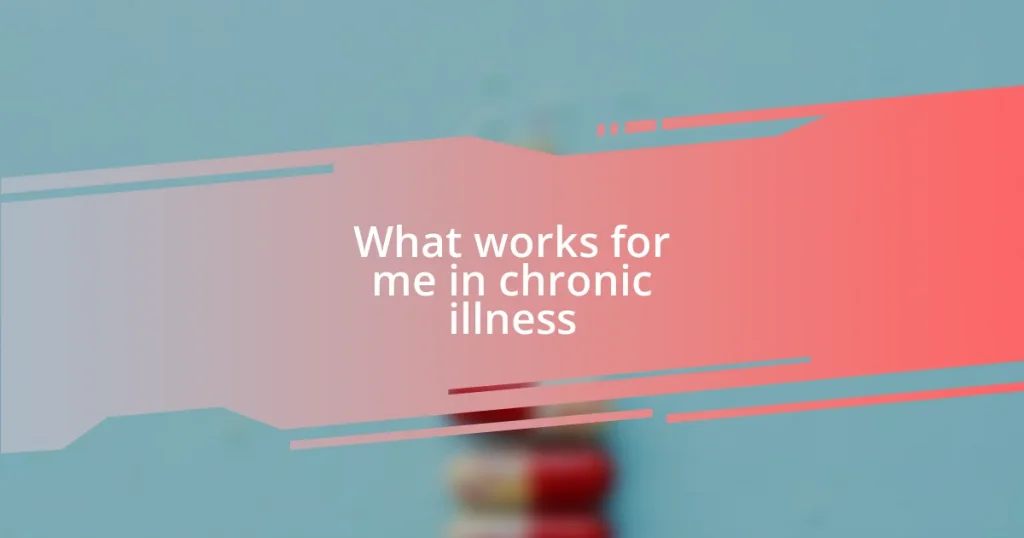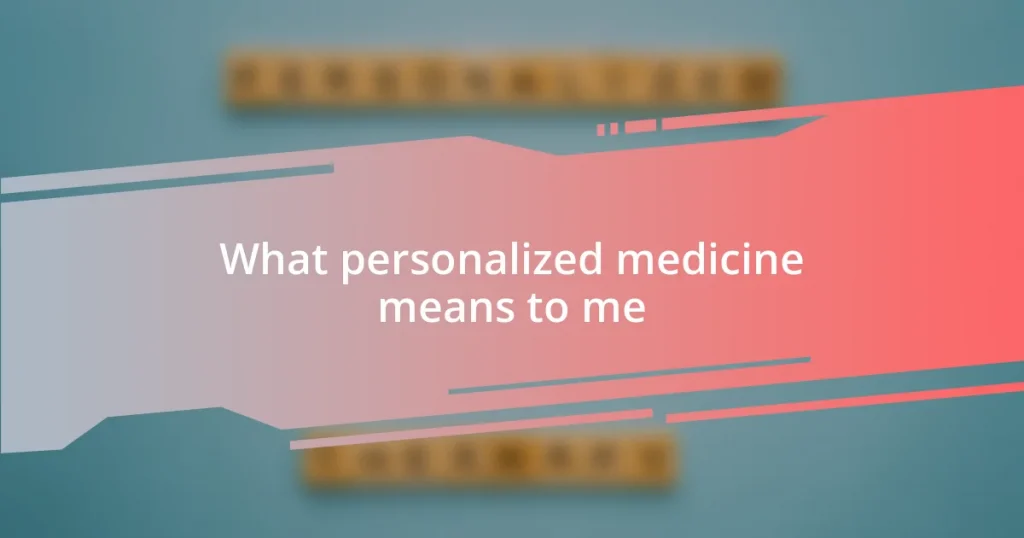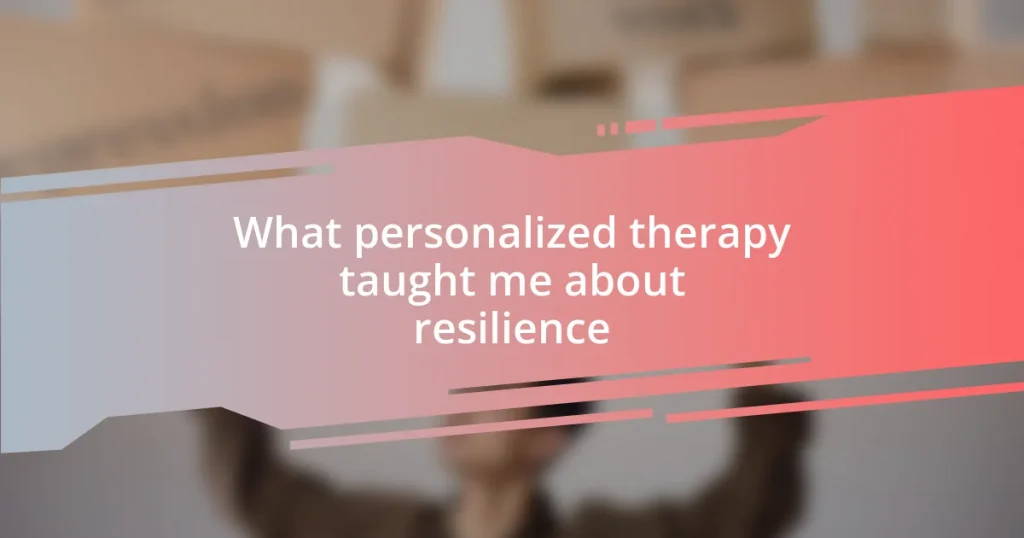Key takeaways:
- Family history research evokes deep emotional connections and offers insights into ancestral struggles and achievements, enriching our understanding of our roots.
- Sharing family stories fosters intergenerational bonds and reinforces values, creating a sense of belonging and continuity within families.
- Utilizing digital tools and DNA analysis enhances the process of family tree building and reveals unexpected connections, making the exploration of family history more accessible and engaging.
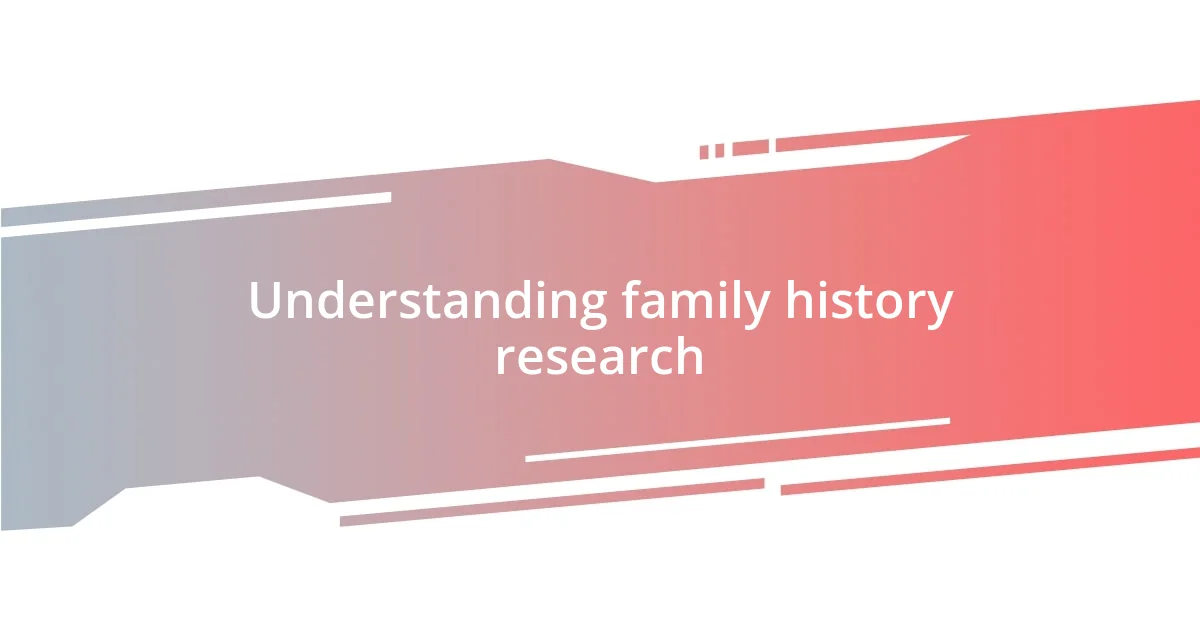
Understanding family history research
Diving into family history research can be both exciting and overwhelming. I remember the thrill of discovering an old photograph of my great-grandparents during my journey; it felt like unearthing a treasure. Have you ever found something that made you pause and reflect on your roots? That moment for me underscored the emotional tapestry woven throughout our family narratives.
Understanding the nuances of family history research requires patience and an open mind. I often found myself sifting through various types of records—census data, birth certificates, and even immigration logs. Each source added a layer to the story, revealing insights I hadn’t considered before. It made me wonder: what untold stories might be hiding within the pages of dusty archives or family albums in your own home?
As I pieced together my ancestry, I began to appreciate the resilience and struggles of those who came before me. There were moments of joy in tracing lineages, but also heartbreak in uncovering lost connections. Have you experienced that bittersweet mix of emotions while learning about your family history? It’s a powerful reminder that understanding our past enriches our present and shapes our future.
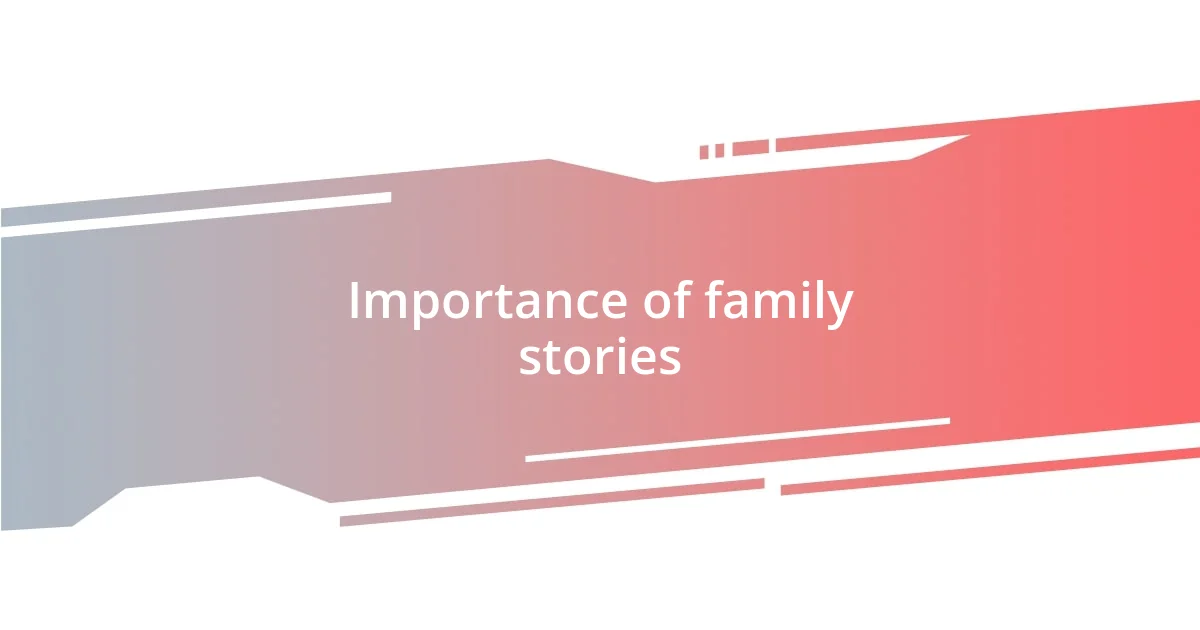
Importance of family stories
Family stories hold immense significance in connecting us to our roots. I recall sitting with my grandmother, listening to her recount tales of her childhood during the war. These narratives not only brought her past to life but also provided invaluable lessons on resilience, courage, and love. It’s fascinating how these stories shape our identity and give context to our lives.
Moreover, sharing family stories fosters a sense of belonging among relatives, especially younger generations. When my children hear about their great-grandparents’ adventures, they feel part of something much larger than themselves. This intergenerational bond nurtures empathy and understanding, creating a foundation for future relationships. Have you noticed how reminiscent narratives can spark curiosity and create lasting memories?
Lastly, the emotional impact of family stories often reinforces values and traditions. For instance, the way my father explains the importance of family dinners sparks nostalgia and a desire to maintain such cherished gatherings. Those moments serve as a gentle reminder of where we come from and the values we wish to uphold. Isn’t it inspiring how a simple story can have a ripple effect on our lives and those around us?
| Benefits of Family Stories | Examples from My Experience |
|---|---|
| Connects Generations | Listening to my grandmother’s war stories over tea. |
| Fosters a Sense of Belonging | My children’s excitement when they hear tales of their great-grandparents. |
| Reinforces Values and Traditions | Family dinners inspired by my father’s anecdotes. |
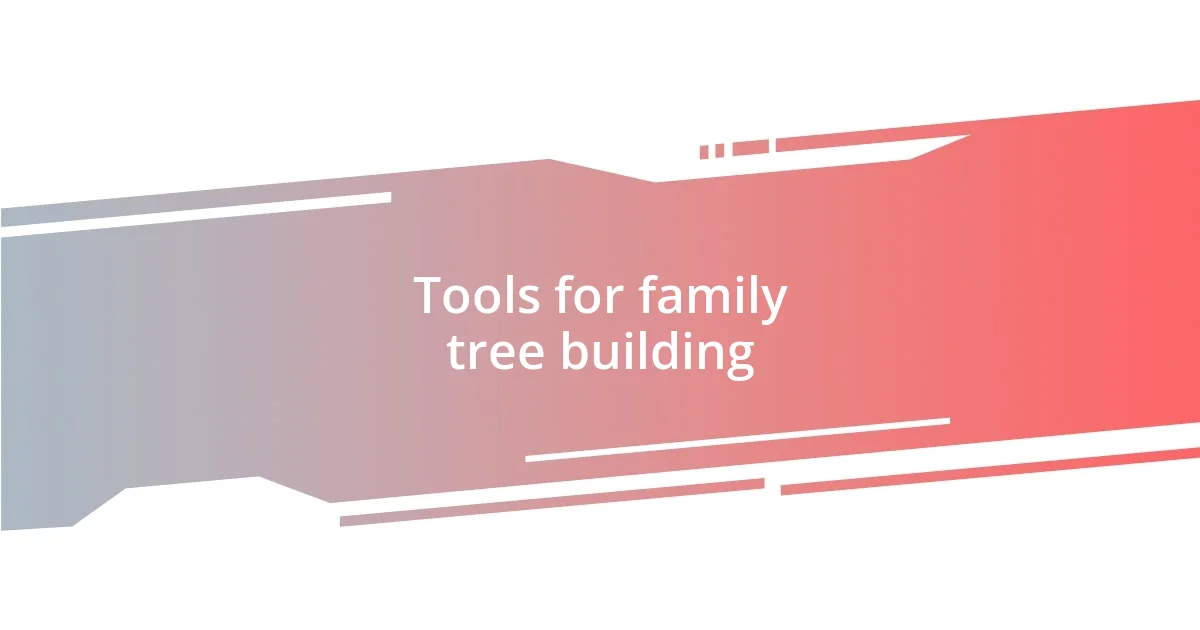
Tools for family tree building
Building a family tree is both a structured and creative endeavor, and having the right tools can streamline the process significantly. I’ve experimented with a few digital platforms, and each has its own unique features. What stood out to me is how user-friendly some of these programs are. For instance, I could drag and drop family members into place, making it feel more like crafting a story than just entering data.
Here are some tools that I found particularly helpful:
- Ancestry.com: This site offers vast databases and hints based on records, which was instrumental in unraveling elusive branches of my family tree.
- MyHeritage: I loved the photo enhancement options here; they allowed me to restore and colorize old family photos, making them feel alive again.
- FamilySearch: Completely free and packed with records, this tool helped me trace back my lineage and connect with distant relatives.
- Geneanet: This platform emphasizes collaboration, allowing me to share findings and discover connections with others researching shared ancestors.
- Legacy Family Tree: I appreciated the detailed reports I could generate; they made it easy to share my findings with family members.
I recall the excitement of discovering a distant cousin using one of these platforms and the thrill of sharing our findings over a video call. That moment felt like rediscovering a long-lost part of my family, and it showcased the power of technology in connecting us across generations.
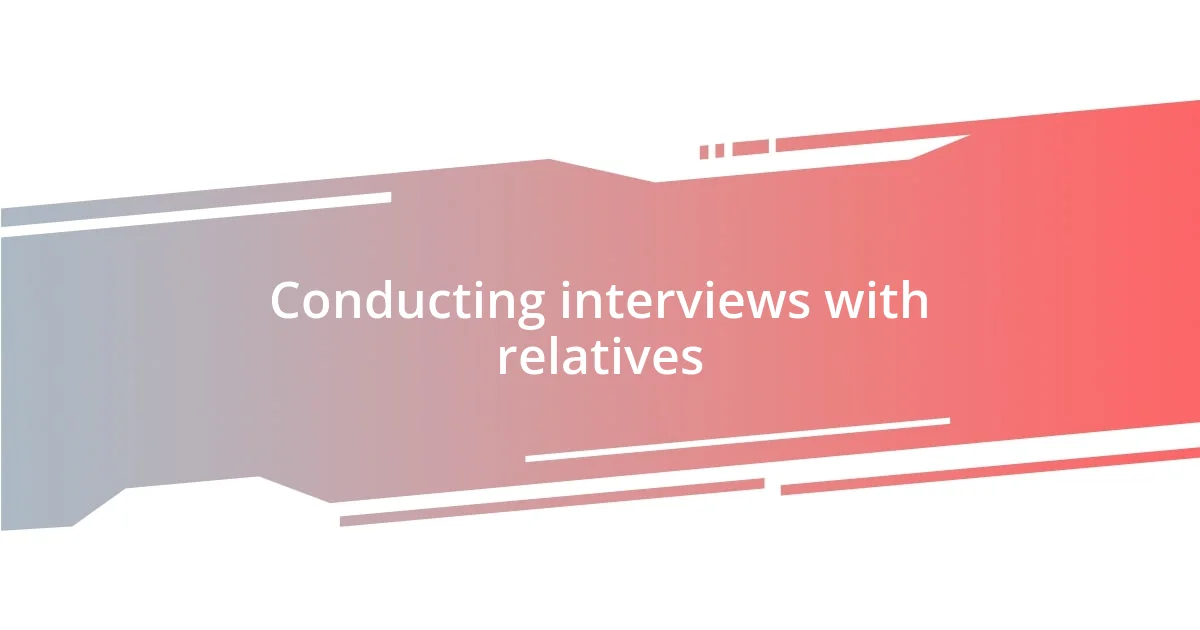
Conducting interviews with relatives
Conducting interviews with relatives can be one of the most rewarding parts of uncovering family history. I remember the first time I sat down with my uncle. He delivered stories that were not only packed with details but also filled with emotions that I never could have imagined. Listening to him recall his childhood escapades brought a new depth to my understanding of our family history.
When interviewing relatives, it’s helpful to prepare a list of open-ended questions. These questions can encourage deeper conversations that go beyond simple “yes” or “no” answers. For example, instead of asking if they liked their childhood neighborhood, I asked what their favorite memories were from that time. The difference was striking! This approach often revealed vivid stories that painted a picture of my family’s past and made me feel truly connected to those experiences.
I’ve also found that the ambiance matters—a cozy setting often helps my relatives relax and open up. I remember setting up a small table in my kitchen with a cup of tea for my grandmother. Her eyes lit up, and the stories flowed freely, each one more enchanting than the last. Have you considered what a difference the right environment can make? After all, when people feel comfortable, they tend to share more of their heart, giving us invaluable insights into our family heritage.
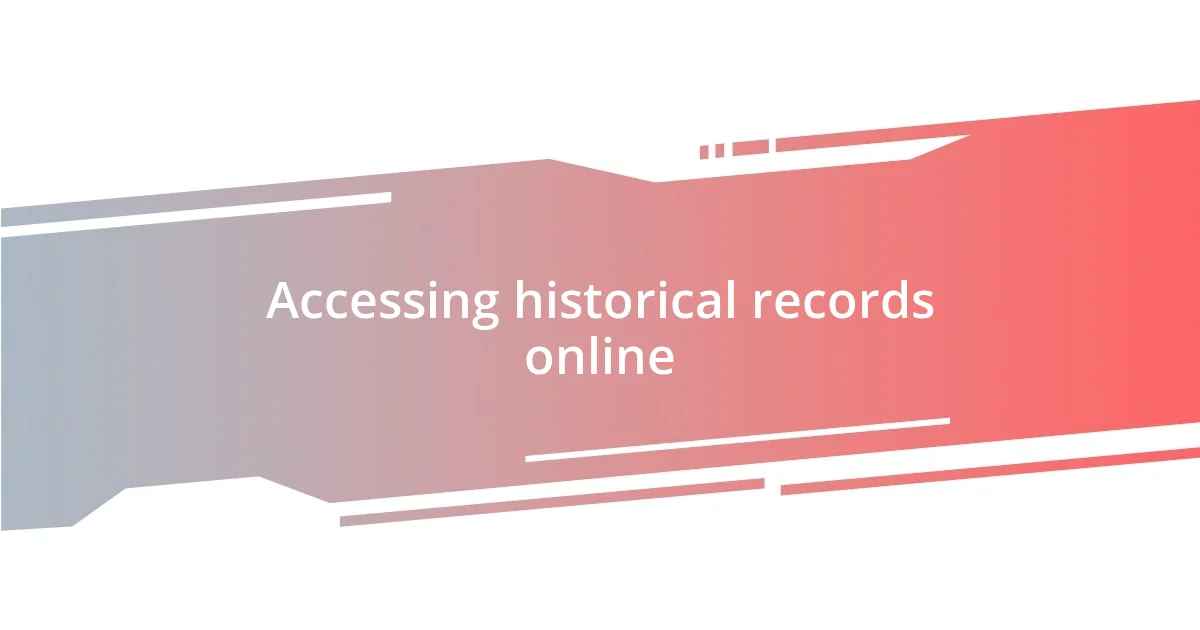
Accessing historical records online
Finding historical records online can truly feel like embarking on a treasure hunt. I remember the first time I stumbled upon digitized documents from an ancestral town. The thrill of seeing names I’d heard in family stories, right there in black and white, made my heart race. Have you ever felt that rush of connection to your past? It’s a powerful experience that reinforces the importance of accessing these resources.
I’ve found that online archives and databases can be hit-or-miss, but persevering is key. For instance, while navigating a specific site, I encountered a scanned old newspaper that mentioned my great-great-grandfather’s involvement in a local event. The excitement of discovering such details made me want to shed light on every dusty corner of my family’s story. Patience truly pays off, and those moments of revelation make the effort worthwhile.
Every site has its quirks. When I first delved into FamilySearch, it felt overwhelming, but then I realized the advanced search options could help me narrow down the results significantly. With a bit of practice, navigating records became second nature. Have you experienced that initial confusion before finding your groove? What I discovered is that with the right approach and a little persistence, unlocking the secrets of your family’s history can lead to some of the most rewarding discoveries you’ll make.
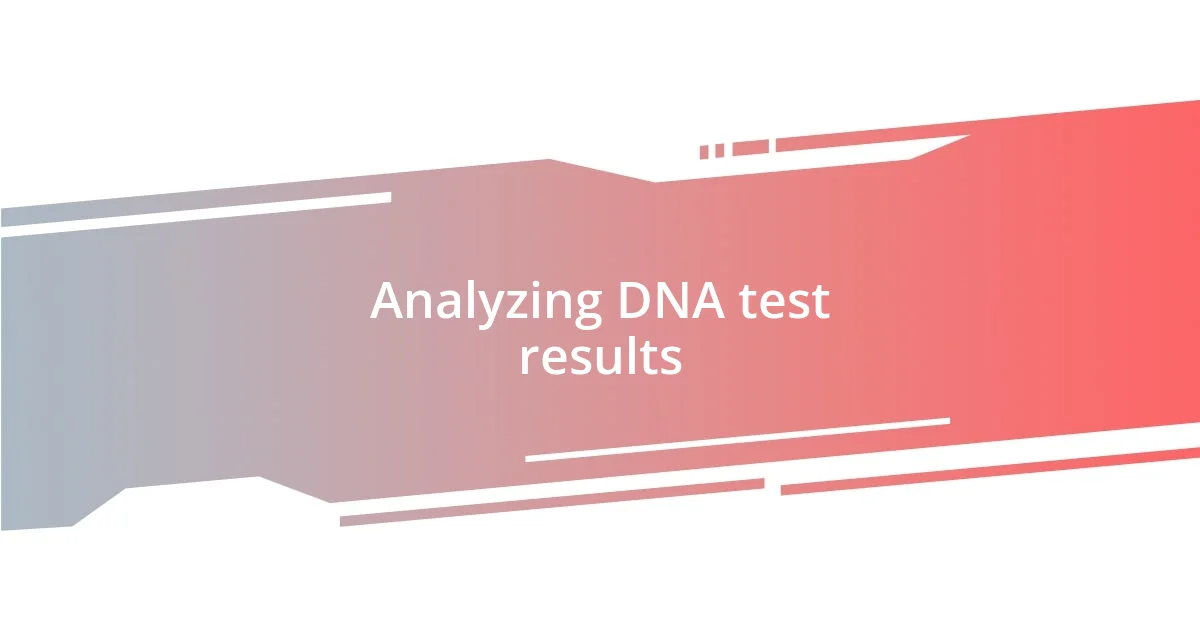
Analyzing DNA test results
Analyzing DNA test results can be a fascinating yet perplexing endeavor. When I first received mine, I was filled with a mix of excitement and confusion. The results presented percentages of my ethnic background, but what really caught my attention were the unexpected connections to relatives I had never known about. Have you ever looked at your results and wondered about those distant cousins who suddenly appeared? It’s a digital doorway that connects you to a web of shared ancestry, sparking curiosity about family bonds you previously felt unaware of.
I dove deeper into my results, intrigued by the regional breakdowns of my heritage. Discovering that I had a significant percentage linked to an area I once visited stirred emotions. I recalled my trip to Ireland, standing on those misty cliffs, and feeling an inexplicable sense of belonging. Analyzing these numbers isn’t just about finding where we come from; it’s about acknowledging those pieces of ourselves that have been passed down through generations. Have you experienced that sense of connection, too? It’s incredible how numbers can evoke memories and stories, enriching our understanding of family history.
As I explored the family matching features, I was surprised by how many matches I had with people who shared my ancestors. I remember reaching out to one match who turned out to be a third cousin. The conversation blossomed into an exchange of stories and documents that validated so much of what I had previously known. It’s enlightening to realize that DNA results aren’t simply data points; they’re an invitation to engage with others on the same journey. Has reaching out to a DNA match led to any surprising revelations for you? Trust me, making those connections can be a game-changer in piecing together your family’s story.
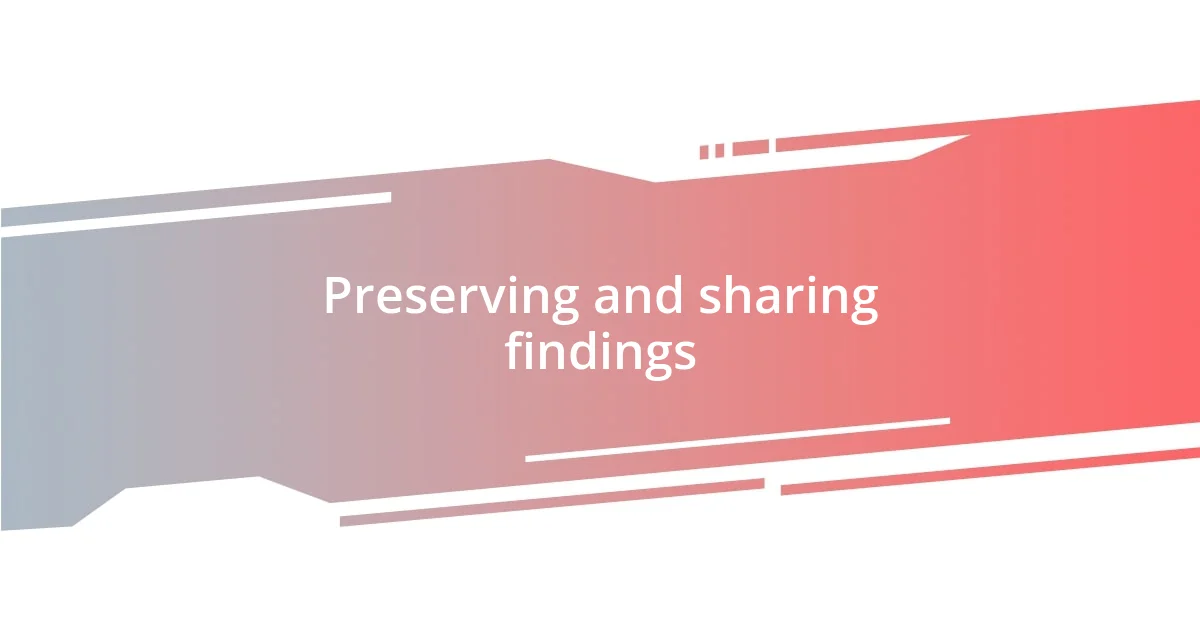
Preserving and sharing findings
When it comes to preserving and sharing my findings, I’ve found that storytelling is an invaluable tool. After gathering various documents and photos, I started to share my research in a family newsletter. It was heartwarming to see my relatives so engaged, asking questions and sharing their thoughts. Have you considered how sharing family stories can strengthen bonds? I’ve seen firsthand how these connections spark discussions that reveal even more details about our heritage.
Another approach I found effective is creating a digital archive. Using a simple family tree software, I began inputting names, dates, and photographs. It felt like piecing together a puzzle, with each entry telling part of a larger story, and I often found myself lost in the memories evoked by old photos. The emotional weight of those moments encouraged me to document and categorize everything properly. Have you ever thought about how technology can help preserve history for future generations? It’s a comforting thought that our discoveries can live on, offering a glimpse into our family’s past.
Lastly, I’ve also explored the idea of hosting family gatherings focused on sharing our ancestral tales. At one memorable reunion, we sat in a circle, each person sharing a unique story or memory linked to our heritage. I felt an overwhelming sense of unity in the room, realizing that these shared narratives are what bind us together. What’s more powerful than recalling moments that shaped us as a family? By engaging others in this way, I’ve seen how thrilling it is to keep our history alive, ensuring it resonates through time.

